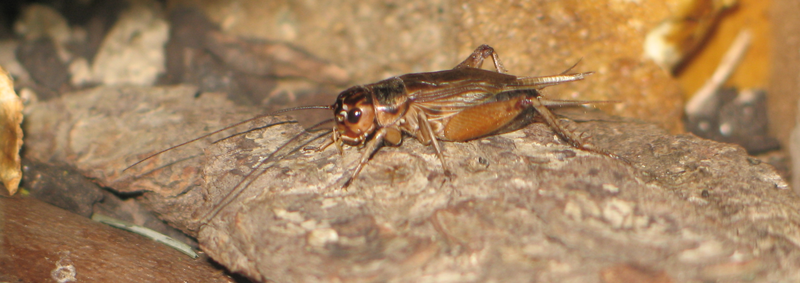

Photo: Joseph Berger, Ĭamel cricket (Ceuthophilus sp.). Crickets hear songs with “eardrums” located on their front legs.įield cricket ( Gryllus pennsylvanicus). There are three types of songs: a call to attract females, an aggressive song to warn away other males, and a courtship song prior to mating. Count the number of chirps in 15 seconds then add 40 for a temperature estimate in degrees F. The warmer the temperature, the faster they sing. Sound is produced when the males rub a sharp edge at the base of one front wing along a file-like ridge on the underside of the other wing. Of the three common cricket invaders, only house and field crickets sing. Camel crickets’ desire for dark moist places almost always restricts them to damp basements and crawl spaces. They range from light tan to dark brown in color and are 13-33 mm (1/2 - 1 1/4 inches) in length.


These crickets have extremely long antennae and rear legs. The camel or cave cricket is named for its humped appearance when viewed from the side. They are usually found on the lower floors and in the basement. They are especially fond of warmth but can be found in any part of the home.įield crickets are robust black insects 13-33 mm (1/2 - 1 1/4 inches) long. The house cricket is 19-22 mm (3/4 - 7/8 inch) long, light yellowish-brown with three dark bands on the head. If you have a house cricket infestation in your Covington LA property, contact your local pest control experts.Home invading crickets are usually one of three kinds. The house cricket is especially destructive to silk and woolens. They conceal themselves in cracks, behind baseboards, and may burrow into the mortar of walls. Because these crickets are attracted to warmth, they are often present in the vicinity of the fireplace, kitchen, furnace, water heater, and basement. House crickets do not bite or spread disease, however, they can become a nuisance if they gain entry into a home, damaging clothing, carpets, and areas covered in fabric. House Cricket Behaviors, Threats, or Dangers When attracting females, males rub their front wings together causing a chirping sound. Homeowners may also be alerted to their presence by the familiar chirping sounds made by males. House crickets are nocturnal and usually first make themselves evident at dusk when they begin to seek food in homes. With the coming of cold weather, the house cricket enters homes and is active in warm areas of the house.

They may also be seen in compost bins and garbage dumps during the winter, as well as in houses, sheds, and other shelters. House Cricket Habitatĭuring warm weather, the house cricket lives outdoors in piles of debris, rocks, firewood, and lumber. House crickets are drawn to warm moist environments, seeking food and shelter within homes and structures as temperatures cool down in the fall. House crickets are nocturnal and omnivorous, feeding readily on various foods, and are particularly attracted to liquids, especially fermented beverages such as beer or sweetened vinegar. The house cricket was introduced into Canada and the United States in the 18th century and attracted the attention of early writers by its serenades and whimsical habit of chewing on clothes.


 0 kommentar(er)
0 kommentar(er)
